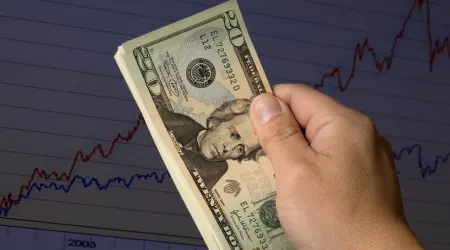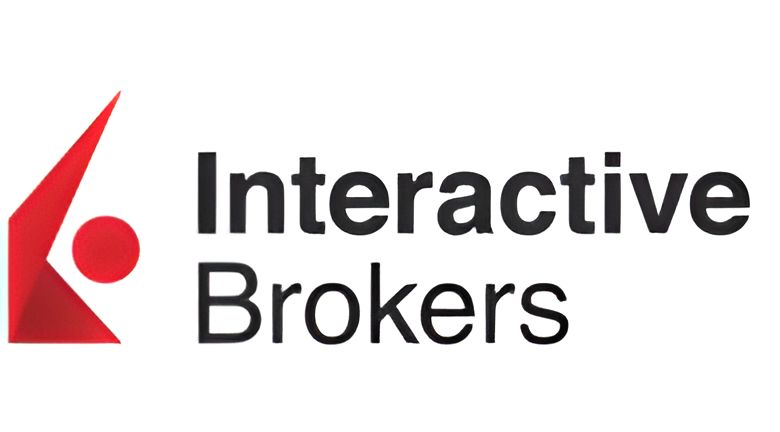What is an IPO?
An initial public offering (IPO) is the process in which a company goes from private to publicly traded on a stock exchange. This event gives large institutions and everyday investors a chance to invest in the company.
Why do companies conduct IPOs?
Private companies hold IPOs to raise money. Otherwise, the company would need to source private funding, which can come from other companies, investment managers or high-net-worth individuals.
However, companies also choose to hold IPOs in order to maintain control of the company, something they may have to give up if they resort to private funding. A few other reasons companies raise money include:
- Help the business expand into different markets.
- Offer more favorable credit-borrowing terms.
- Launch new products.
- Hire more staff.
- Take the business overseas.
- Increase exposure and prestige.
- Invest in new infrastructure or technology systems.
SPACs: an IPO alternative
Think of a special purpose acquisition company (SPAC) as another vehicle in which a private company can reach the public market. A SPAC is a company that goes public to raise money and then uses the funds to acquire another company within two years.
It’s becoming an increasingly popular alternative to take the SPAC route to the public market rather than the traditional IPO process because it could reduce paperwork and government oversight.
Direct listing: an IPO alternative
With an IPO, the company has to work with investment banks to create new shares and sell them to the public. However, with a direct listing the company can sell shares to the public bypassing investment banks. This makes direct listing a cheaper method to list stocks than via IPO.
How do IPOs work?
A company is privately owned before it goes public. Individual shareholders — such as the founders or investment companies — can own pre-IPO companies. However, pre-IPO companies are typically hard to get into for most small investors.
When a company decides to go public, it must file a registration statement with the Securities and Exchange Commission (SEC), typically using Form S-1. Other forms may also be required, especially if the company is registered abroad.
The SEC reviews the forms for compliance. It’s important to note that the SEC review can cause changes and revisions to the forms and the IPO prospectus. Also, the SEC review is no guarantee that a company’s disclosure is complete or accurate.
Once the SEC approves the registration statement, the process continues with the underwriters. Typically, the underwriters are investment banks that manage and sell the IPO. They are also the ones who determine the share price of the IPO. Since the underwriters are responsible for
selling the IPO, they are incentivized to offer a price that is attractive to the investors.
While the company awaits for the IPO, it will apply to be listed on an established stock exchange like the New York Stock Exchange. For the purpose of the IPO, the company is required to disclose its quarterly and annual financial statements going forward.
Our pick for buying IPO stock: Interactive Brokers
IPO prospectus: a company insight
Along with Form S-1 and other forms if required, the company must also provide a “prospectus” that’s used to solicit investors. This document contains the most important company information, including financial data, company profile and products, IPO terms, use of proceeds and more.
Every investor should read the prospectus and become familiar with the company before deciding to invest in the IPO.
How are IPO share prices set?
When a company decides to go public, it hires an investment bank to help it achieve this via an IPO. This investment bank is known as the IPO underwriter.
The underwriter helps determine how to price shares. IPOs offer a predetermined number of shares to investors at a set price per share — rather than changing throughout the day like shares on the NYSE.
IPO share price is determined by:
- The company’s current value.
- Potential future earnings of the company.
- Number of shares offered.
Common IPO terms
- Common stock. These are the shares that will be sold on the IPO. Typically, they come with voting rights. However, sometimes a company may decide to offer dual-class common stock that have higher voting rights than the common stock sold in an IPO.
- Issue price. Also known as the offering price, the issue price is the price at which the shares will start selling during the IPO.
- Offering date. The first day the company is publicly offering its shares.
- Flipping. When an investor buys shares during the IPO and then sells them within a specific time period — typically 15 days — is considered flipping. Most platforms that offer IPO shares condemn this behavior and may limit investors from buying into future IPOs.
- Float. The number of shares available to investors.
- Underwriter. An investment bank that manages the IPO and sells their shares to potential investors.
- Lock-up period. The time frame after an IPO when the underwriter restricts insiders from selling their shares in the secondary market.
- Price range. The price at which the company expects to sell its shares in the IPO.
Should you invest in IPOs?
If you have an opportunity to buy shares via an IPO at IPO prices, you must understand the benefits and risks involved.
The first factor you have to consider before investing in IPOs is the macroeconomic factor. For example, in periods of high inflation and rising interest rates, chances are the stock market will underperform. That’s because the cost to borrow money for “riskier” plays is high.
The opposite also holds true — in times of low interest rates where borrowing money is cheaper, the chances are the stock market will outperform other assets. A company that goes public during these times will likely be equally affected.
Another factor to consider is the company itself and the potential to return value to investors. For example, a company in the healthcare sector that’s building a particular product goes public to raise funds for research and development or to cover operation costs.
Doing this is a high-risk bet because the company may fail to deliver the product or the product may not be as great as advertised. This will negatively affect the price and it will likely drop below the IPO price.
The opposite may also happen — the company succeeds with its product and the market price goes way above the IPO price. Typically, you can avoid such downfalls by choosing great companies with strong competitive moat and solid products and services. But this requires due diligence on your part.
Let’s look at some examples of how popular companies performed after the IPO.
Rivian (RIVN)
Rivian Automotive was one of the hottest IPOs during the bull market of 2021. Its high profile investors such as Amazon (AMZN) and Ford (F) combined with a solid selection of electric vehicles by Rivian draw major investor interest.
The company went public at a price of $78. Within days after the IPO, RIVN traded at above $130. However, this coincided with the bull market peak in November 2021. After that, the price of RIVN continuously dropped, trading at around $30 only 12 months post-IPO.
Robinhood (HOOD)
Robinhood is another example of a company going public during the height of the bull market. The company went public in July 2021 at a share price of $38.
One month later, the share price traded at over $60. 12 months later, HOOD traded at around $8. The reason for the drop can be attributed to macroeconomic factors, mostly because trading volume fell due to the bear market in stocks and crypto.
Snowflake (SNOW)
Snowflake — a cloud software company — debuted in September 2020 at a $245 IPO price. This was during favorable macroeconomic conditions and the stock price hit $400 just three months post-IPO.
After that, the price dropped to below IPO levels. Luckily, it was back at $400 at the height of the bull market in November 2021.
Similar to most stocks, SNOW dropped to $170 at 24 months after its IPO.
Pros and cons of investing in IPOs
- Fixed share price. Unlike regular shares, IPOs offer a fixed price per share that won’t change until the market opens.
- Get in early. Investing in an IPO gives you the opportunity to be among the first to buy shares in a company before it’s listed on the exchange.
- Potentially sell your shares for a profit. Well-known brands can see share price rise significantly once they’re listed on a public exchange. If your share increases after the IPO, you could sell them at a profit. But this is a high-risk strategy — and past performance is no guarantee of future performance.
- The share price could be overvalued. The set share price offered through an IPO might not be fair value, and you could end up paying more for the shares than they’re worth.
- New companies can be high-risk. Many IPOs are held by newer companies operating only for a few years. Because they’re often still in their growth phase, they’re likely to be at higher risk and more volatile than other shares.
Bottom line
- Companies hold IPOs when they’re ready to go public and sell their shares on a stock exchange.
- Most large institutes or high-dollar investors invest in IPOs — but recently, everyday investors are getting the chance to participate via platforms like Robinhood and Interactive Brokers.
- When the IPO is over and the shares are publicly listed on the market, anyone can buy them, but the price will be different.
Frequently asked questions
More on investing

Best Stocks for Beginners With Little Money to Invest
These are the stocks to buy when you don’t have much to spend.
Read more…
10 best gold stocks
Here are the 10 best gold stocks based on year-to-date returns for November 2024.
Read more…
What happens if a brokerage firm fails?
Here’s what happens to your securities if your brokerage fails, and how your assets are protected by SIPC and FDIC.
Read more…Paid non-client promotion. Finder does not invest money with providers on this page. If a brand is a referral partner, we're paid when you click or tap through to, open an account with or provide your contact information to the provider. Partnerships are not a recommendation for you to invest with any one company. Learn more about how we make money.
Finder is not an advisor or brokerage service. Information on this page is for educational purposes only and not a recommendation to invest with any one company, trade specific stocks or fund specific investments. All editorial opinions are our own.
More guides on Finder
-
Robinhood Now Let’s You Trade on the Outcome of the Presidential Election; Joining Kalshi and others.
Robinhood Launches Presidential Election Event Contracts Ahead of the Nov 5 Presidential Election
-
Today’s Best Brokerage Account Bonuses [Signup and Transfer Promos]
Explore the best bonuses for opening a new brokerage account.
-
Trading for Beginners: 9 Best Trading Platforms to Get Started
These are the best trading platforms for beginners, according to Finder’s comprehensive analysis.
-
SoFi Invest vs. Robinhood
Compare pros, cons, research tools and reviews for these two trading platforms.
-
10 Best Stock Apps of 2024 to Elevate Your Mobile Trading
Check out our picks of the best trading apps for beginners, options traders, hands-off investors and more.
-
10 Best Brokerage Accounts for Trading and Investing in 2024
See our picks of the best brokerage accounts, including Fidelity, SoFi, Charles Schwab, Public, Robinhood and E*TRADE .
-
How to invest in the S&P 500 in 2024
What you need to know about investing in the leading indicator for the overall US stock market.
-
How to Invest $10K
Maximize $10,000 with broker bonuses, IRA contribution matches, index funds, stocks, ladder CDs, hiring a financial advisor and more.
-
How to Invest $20K: 8 Ways to Maximize Earnings
Top ways to invest $20K include stocks, retirement accounts, conservative investments, ETFs and more. See our full list here.
-
Robinhood Review 2024: IRA Match and No Commissions
A deep dive into the highlights and limitations of Robinhood.
Ask a question
